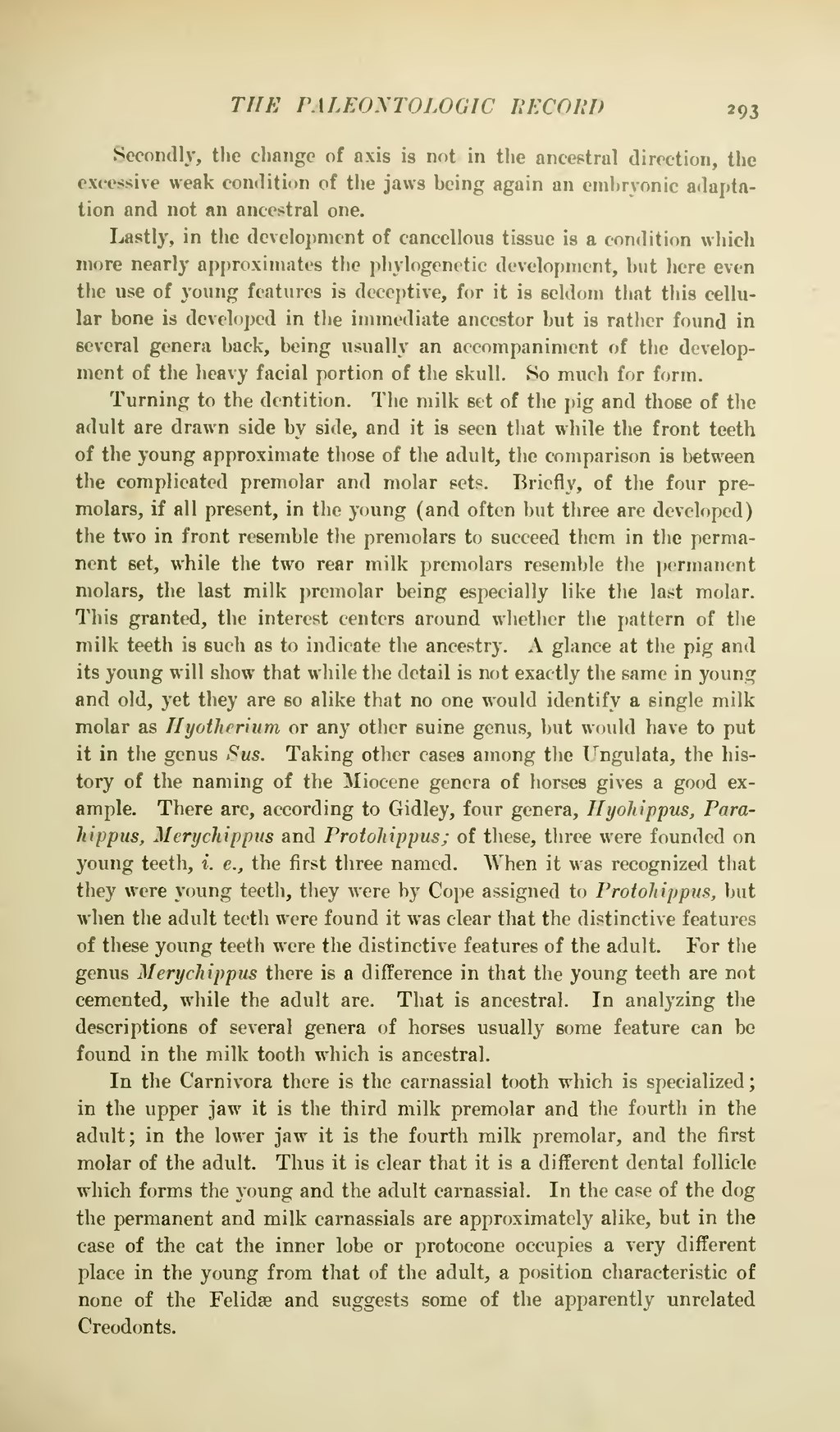Secondly, the change of axis is not in the ancestral direction, the excessive weak condition of the jaws being again an embryonic adaptation and not an ancestral one.
Lastly, in the development of cancellous tissue is a condition which more nearly approximates the phylogenetic development, but here even the use of young features is deceptive, for it is seldom that this cellular bone is developed in the immediate ancestor but is rather found in several genera back, being usually an accompaniment of the development of the heavy facial portion of the skull. So much for form.
Turning to the dentition. The milk set of the pig and those of the adult are drawn side by side, and it is seen that while the front teeth of the young approximate those of the adult, the comparison is between the complicated premolar and molar sets. Briefly, of the four premolars, if all present, in the young (and often but three are developed) the two in front resemble the premolars to succeed them in the permanent set, while the two rear milk premolars resemble the permanent molars, the last milk premolar being especially like the last molar. This granted, the interest centers around whether the pattern of the milk teeth is such as to indicate the ancestry. A glance at the pig and its young will show that while the detail is not exactly the same in young and old, yet they are so alike that no one would identify a single milk molar as Hyotherium or any other suine genus, but would have to put it in the genus Sus. Taking other cases among the Ungulata, the history of the naming of the Miocene genera of horses gives a good example. There are, according to Gidley, four genera, Hyohippus, Parahippus, Merychippus and Protohippus; of these, three were founded on young teeth, i. e., the first three named. When it was recognized that they were young teeth, they were by Cope assigned to Protohippus, but when the adult teeth were found it was clear that the distinctive features of these young teeth were the distinctive features of the adult. For the genus Merychippus there is a difference in that the young teeth are not cemented, while the adult are. That is ancestral. In analyzing the descriptions of several genera of horses usually some feature can be found in the milk tooth which is ancestral.
In the Carnivora there is the carnassial tooth which is specialized; in the upper jaw it is the third milk premolar and the fourth in the adult; in the lower jaw it is the fourth milk premolar, and the first molar of the adult. Thus it is clear that it is a different dental follicle which forms the young and the adult carnassial. In the case of the dog the permanent and milk carnassials are approximately alike, but in the case of the cat the inner lobe or protocone occupies a very different place in the young from that of the adult, a position characteristic of none of the Felidæ and suggests some of the apparently unrelated Creodonts.
